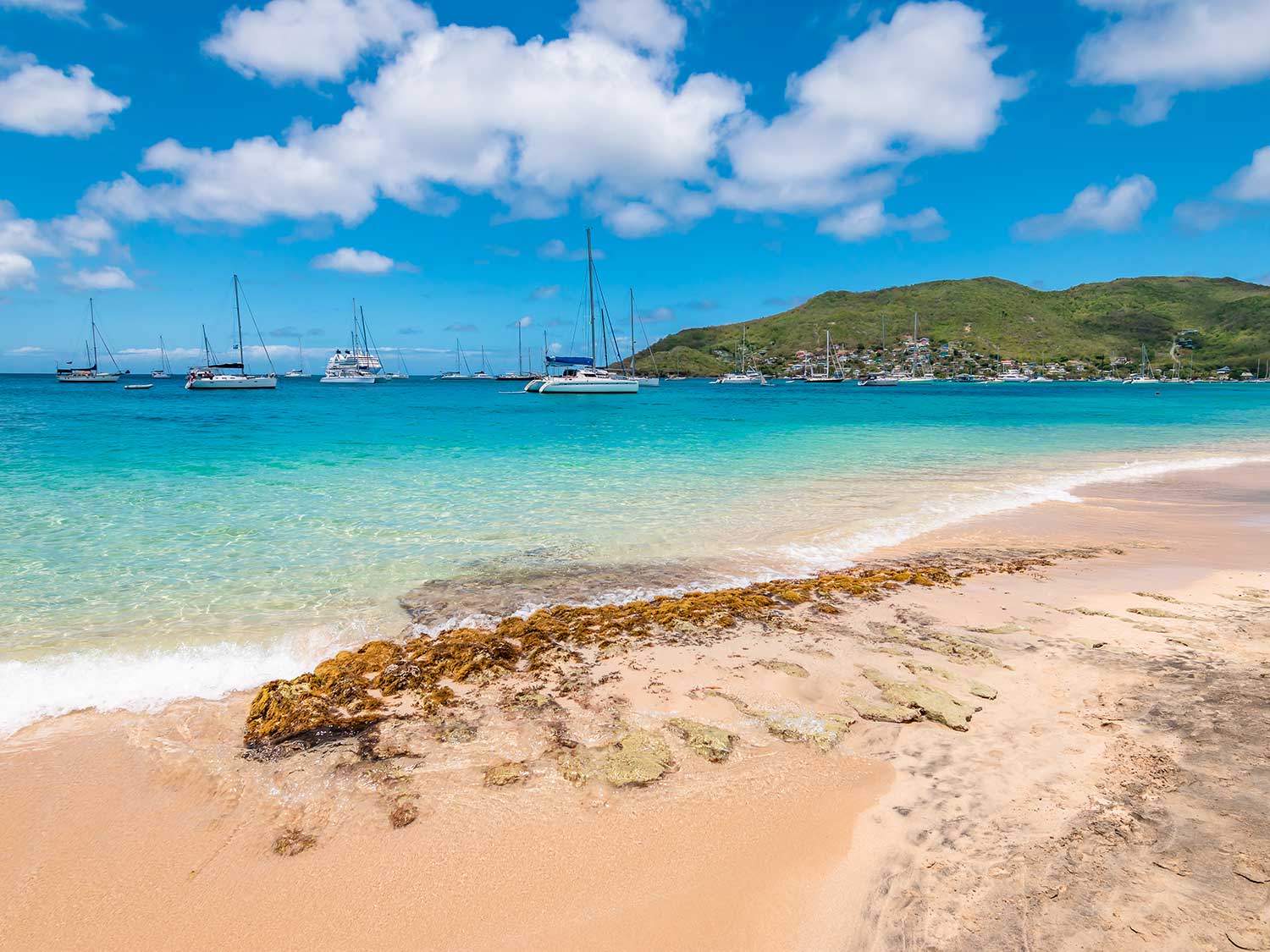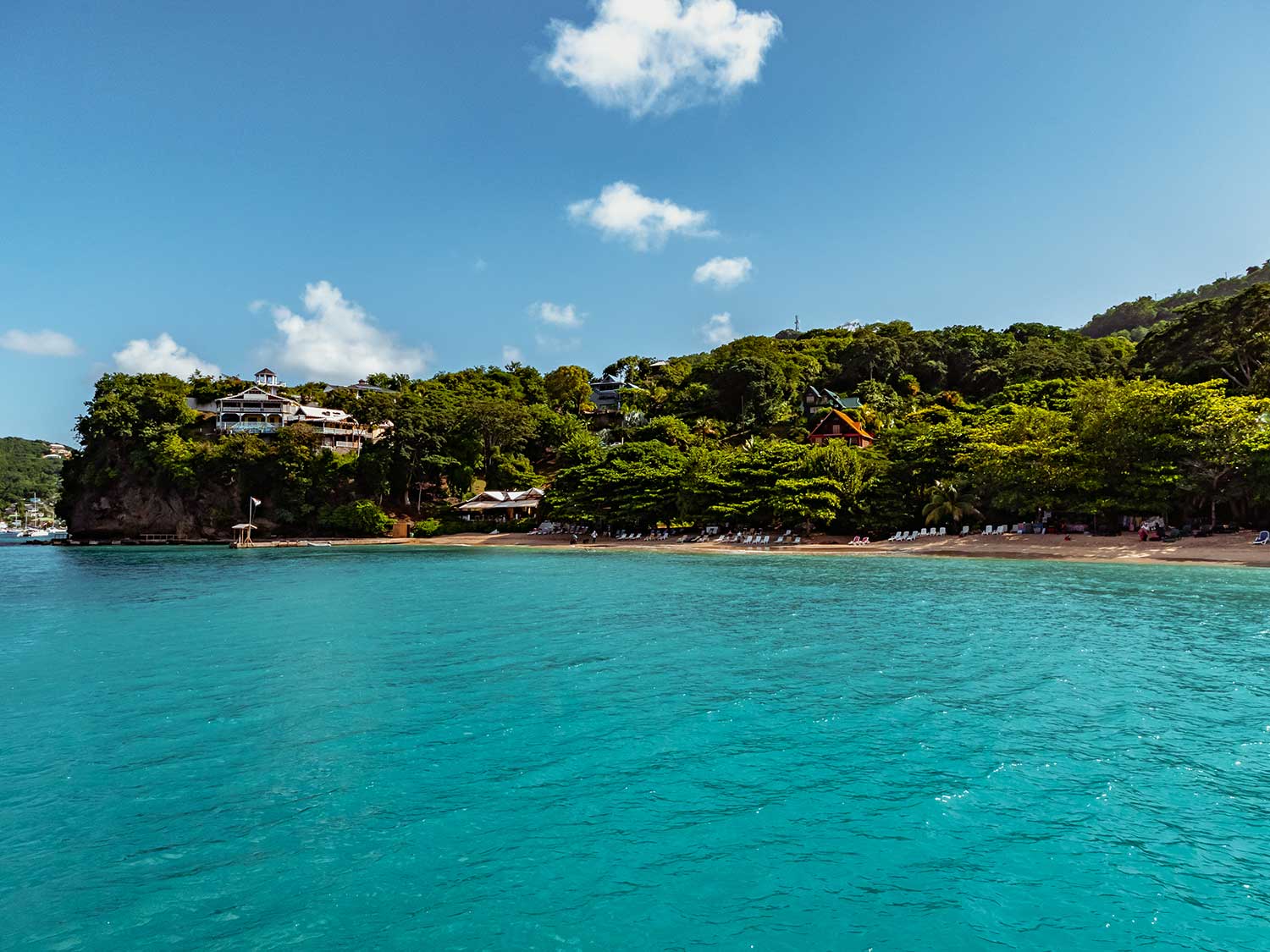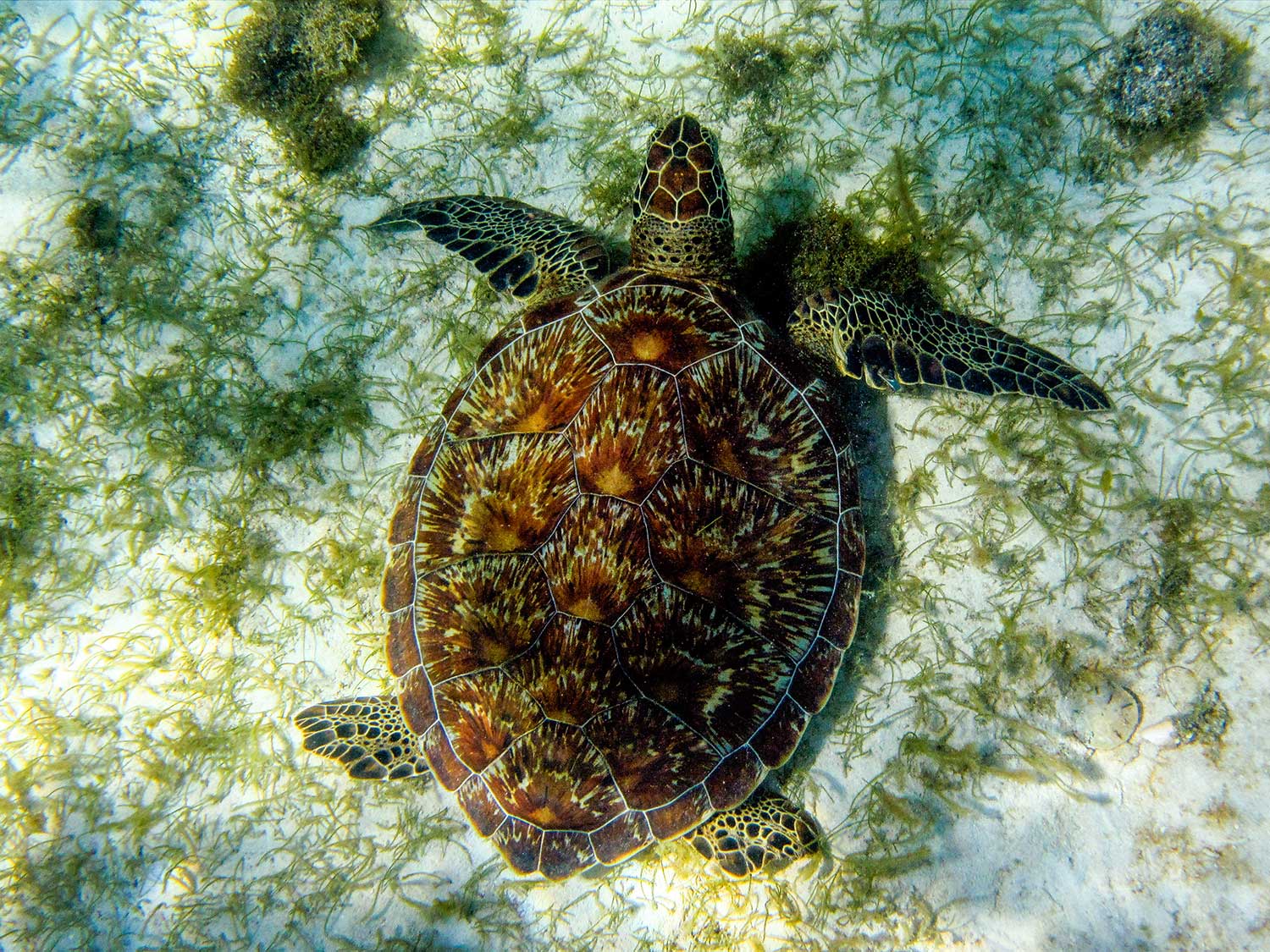The Best Snorkeling In Bequia
This quaint island in the Grenadines is a hidden gem that isn’t packed with snorkeling options, but what it has will please any underwater explorer.
At just seven miles, Bequia is the second largest of the charming Grenadines. This tiny, picturesque "island of the clouds" features a number of steep cliffs plunging down to the water, making it excellent for dramatic photos and wall diving, but fewer places to enter the water for shore diving or snorkeling.
The soft sand beaches are lovely, but typical to most clear water sand entry shorelines, what is good for the toes does not always make the best sea life habitat (and therefore snorkeling). There are a few exceptions to the rule, and a host of friendly dive shops happy to have snorkelers ride along for a nominal fee.
Princess Margaret Beach
When in Rome, or a soft sandy bay, enjoy spotting what comes naturally. For Princess Margaret Beach, this can mean flounders sliding along the white sand. About 30 yards offshore is a hotspot for sand dollars, these delicate exoskeletal beauties crumble to nothing when dashed along rocks and jagged coral outcroppings, but thanks to this protected stretch you can get lucky and spot quite a few.
Also keep an eye out for flying gunard. Sometimes seen in male/female pairs, these impressive bat-winged fish nudge along the bottom with an occasional brilliant iridescent blue flash as the male extends his wings and warns off interlopers (or snorkelers popping down for a closer look).
Moonhole
This shallow reef offers clear, warm water and abundant sea life. Cleaning stations filled with purple Peterson cleaner shrimp attend to parrotfish, rock hind and colorful wrasse. Lovely hard and soft corals are home spotted moray, arrow crabs and banded coral shrimp. Even lettuce sea slugs and fireworms make their home on this healthy chunk of reef.
Nearby Moonhole Wreck lies too deep for snorkelers to get a good look, but it does provide habitat to several turtles that can be spotted venturing up to the surface for a few sips of air.
Lower Bay
This serene bay is home to a great starter reef for beginner snorkelers, also popular with locals teaching their kids to swim. Swimming out about 60 yards offshore you'll find a stretch of large rocks and rubble, a popular hang for parrotfish, sergeant majors, and angelfish. Peer closely at the sand for flat flounders skimming the surface as you make your way to the far right.
This expanse of colorful reef is very shallow, often calm and home to a wide variety of damsels, butterflyfish and wrasse. Small spotted eels wind through the coral, while the occasional filefish passes.
Devil’s Table/Rocky Bay
Start in the sheltered Rocky Bay and follow the shallow reef out for best views. This colorful nursery is a breeding site for many marine species so brush up on your juvenile identification to get the most of your snorkel. Attentive sergeant majors guard patches of purple eggs, as butterflyfish and filefish nose about.
If you are lucky with timing, you can spot a blue creole wrasse "highway" streaming over and through the reef. Often seen are parrotfish, little grunting damselfish, yellowtail snapper and the occasional porcupine puffer.
Tobago Cays
This day trip offers a wealth of underwater beauty (try Friendship Rose, a delightful wooden schooner). The sloping reef creates a shallow and snorkel-friendly home to sponges, eagle rays, hawksbill turtles, seahorses, lobsters, crabs, squid, barracuda, batfish, and pipefish.
Horseshoe Reef protects and surrounds four of the five Tobago Cays and makes it great for diving and snorkeling. Of particular note is the population of green sea turtles. Baradel is one spot to get the memorable experience of swimming in the presence of the magnificent creatures, an idyllic Tobago Cays where it is also possible to spot stingrays and mighty-mouse lookalike eagle rays.
One of the loveliest desert island cays, Mopion, is home to Mopion Reef which can be a rare snorkeling spot possible to see sharks.


